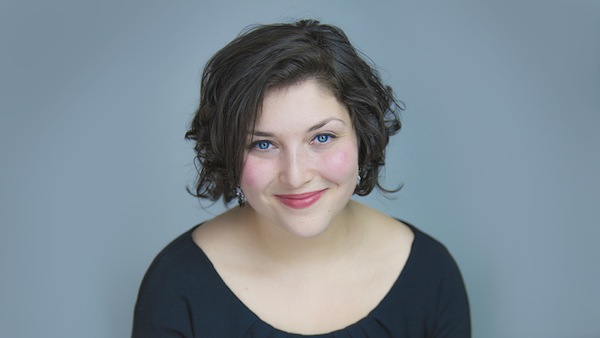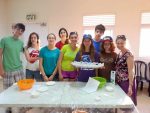By the time you read this, I’ll be working on the last days of preparation before my twins’ b’nai mitzvah. This, as many have said, is a big simcha (happy party), a once-in-a-lifetime event, a milestone and an achievement in our lives. It won’t surprise those who know me that this also puts a lot of pressure on us! Don’t get me wrong, my household is excited. We’re also nervous, apprehensive and stressed by all the details.
It helps to put this into context. We’re a family who has been going to services on Saturdays regularly since long before these children appeared on the scene. My kids are familiar with what’s expected of them and want to do a good job. We’re from a family with diverse approaches to Jewish life, so we’ve gone to all sorts of services, as well as different kinds of Shabbat dinners, family outings on Saturdays, and more. Our kids have experienced many more different ways of observing holidays and Jewish life than I did growing up. This was one of my goals for raising well-informed Jewish kids. For a small ethno-religion, we have so many varied traditions.
This came to mind when I chatted with some of my husband’s young cousins long ago. They told something to the effect that there was only one way to sing a particular part of the Shabbat service. When I explained that there were many melodies and ways to recite the same Shabbat prayers, they looked at me with disbelief. Their experiences with only one congregation in a specific ethnic group and religious movement meant they hadn’t been exposed to multiple melodies or the rich musical traditions of other Jewish communities.
Exploring these choices has made my kids’ lessons and preparations more difficult. If they only knew one tune, well, that’s the one they would sing. However, offering learners many choices means it can be harder to narrow down and practise one melody to make it shine.
Staying true to our family’s particular needs and choices when it comes to the celebration itself has been its own adventure. If one is used to a specific type of bar/bat mitzvah party, with loud music, dancing, catered “rubber chicken,” a photo slide show or a candlelighting ceremony, anything different can seem peculiar. At age 12, I attended one classmate’s bat mitzvah party that was (gasp) held at the family’s home rather than at the synagogue or at a party venue. Rather than graciously modeling that people are different, I thought this was weird. No one reprimanded me for saying this. In retrospect, it was a lovely, heimisch (homey) party held by a family who celebrated the way that they felt most comfortable. I wish I’d had the maturity to see that then.
Holding a Jewish event on a June Shabbat in Winnipeg means that it will be light until late at night, so we’re having a seudah shlishit (a third Shabbat meal or supper). Our congregation’s building is under renovation so the meal will be at home, without the loud music or DJ, to align with those who observe more traditionally. We’ve made numerous choices that my tween self would call “weird.” As an adult, I see it as providing the celebration that fits our family the best.
We’re mostly introverts. Three of the four of us don’t usually like noisy, crowded events. An entire weekend of socialization will be a lot of people time for us. Since many of our relatives are coming from far away, it may be more like a week of company. One of us jokingly said he would announce, “Hey! The party’s over! Please leave!” so he could go back to reading quietly in a corner. We’ve encouraged him not to voice this aloud to any of our relatives or guests.
Although some people hire event planners to manage this, for many households, the burden falls on the mom to arrange everything. This seems to be yet another gendered responsibility. I’ve been told that 50-some years ago, women in the community cooked all the food as well, and there was no catering on offer. I’ve had kind supportive offers from older women friends who remember those days. However, even if one wants to hire serving staff, it can be hard to do in these post-COVID days. There’s just nobody out there who seems to want to do it.
Making so many decisions, from catering to dishes to compost bins and yard games for kids, feels overwhelming. In some moments, I find myself excited about when it will be over and I can stop worrying. Yet, I know that, for many people, this event is a lifelong memory. I just want to make it a meaningful one for all of us. With twins, we only get one chance at it, too, so … no pressure?
Often, I have Jewish texts to lean on to help me understand and guide me. Although it’s not my family’s tradition to recite Eishet Chayil (Proverbs 31:10-31), the tribute to a “woman of valour,” it strikes me that the woman in this important narrative knew how to throw a perfect Jewish family event. I hope I can do something that is half as acceptable, where everyone feels welcome, comfortable and full of good food at the end.
In my head, I’m hearing phrases offered by the older people in my husband’s family at the end of every family party: “May we only meet at happy occasions,” for example. After such a difficult and sad time, I cannot forget those messages. While I worry over the details, please take the opportunity, when it is offered to you, to celebrate at these once-in-a-lifetime happenings. Bring your joy and light to make them special for everyone. “May we only meet at weddings (and not funerals). May we only meet at happy occasions,” these aunts would say as they hugged us. It’s about time to find space for some happy moments, too.
Joanne Seiff has written regularly for the Winnipeg Free Press and various Jewish publications. She is the author of three books, including From the Outside In: Jewish Post Columns 2015-2016, a collection of essays available for digital download or as a paperback from Amazon. Check her out on Instagram @yrnspinner or at joanneseiff.blogspot.com.



